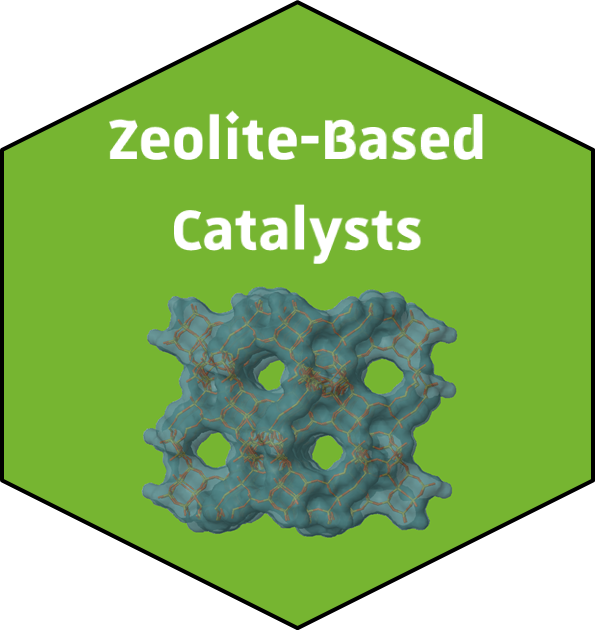
ZEOLITE CATALYSIS
Shifting from non-recyclable homogeneous catalysts to recyclable heterogeneous versions has become a major challenge in the last decade, especially in industry.
Within this Green Chemistry context, we are developing new sets of heterogeneous catalysts based on zeolites as relevant solid supports for bridging homogeneous and heterogeneous catalysis. The resulting protonated/metalated zeolites m-zeo indeed combine the properties of zeolites – heterogeneous solid support, size & shape selectivities – with those of cations m known for their potential in homogeneous catalysis.1,2 To date, we have been able to prepare and successfully evaluated the catalytic potential of protonated (mn+ = H+) and several metalated (mn+ = CuI/II, AgI, ScIII) zeolites in organic synthesis. Remarkably, these inexpensive, easy-to-prepare and easy-to-recycle materials were shown to catalyse various archetypical organic transformations under ligand-free conditions, from cycloaddition (ie, CuAAC & Dorn reactions),3,4 through coupling (ie, Glaser, Chan-Lam & Ullmann-type reactions) 5,6,7,8 to multi-component reactions 9 – for representative examples, see scheme below.
Current works are focusing on the further expansion of application scope of zeolites in organic synthesis, as well as in the exploitation of zeolite confinement effects in order to achieve novel selectivities/reactivites.
